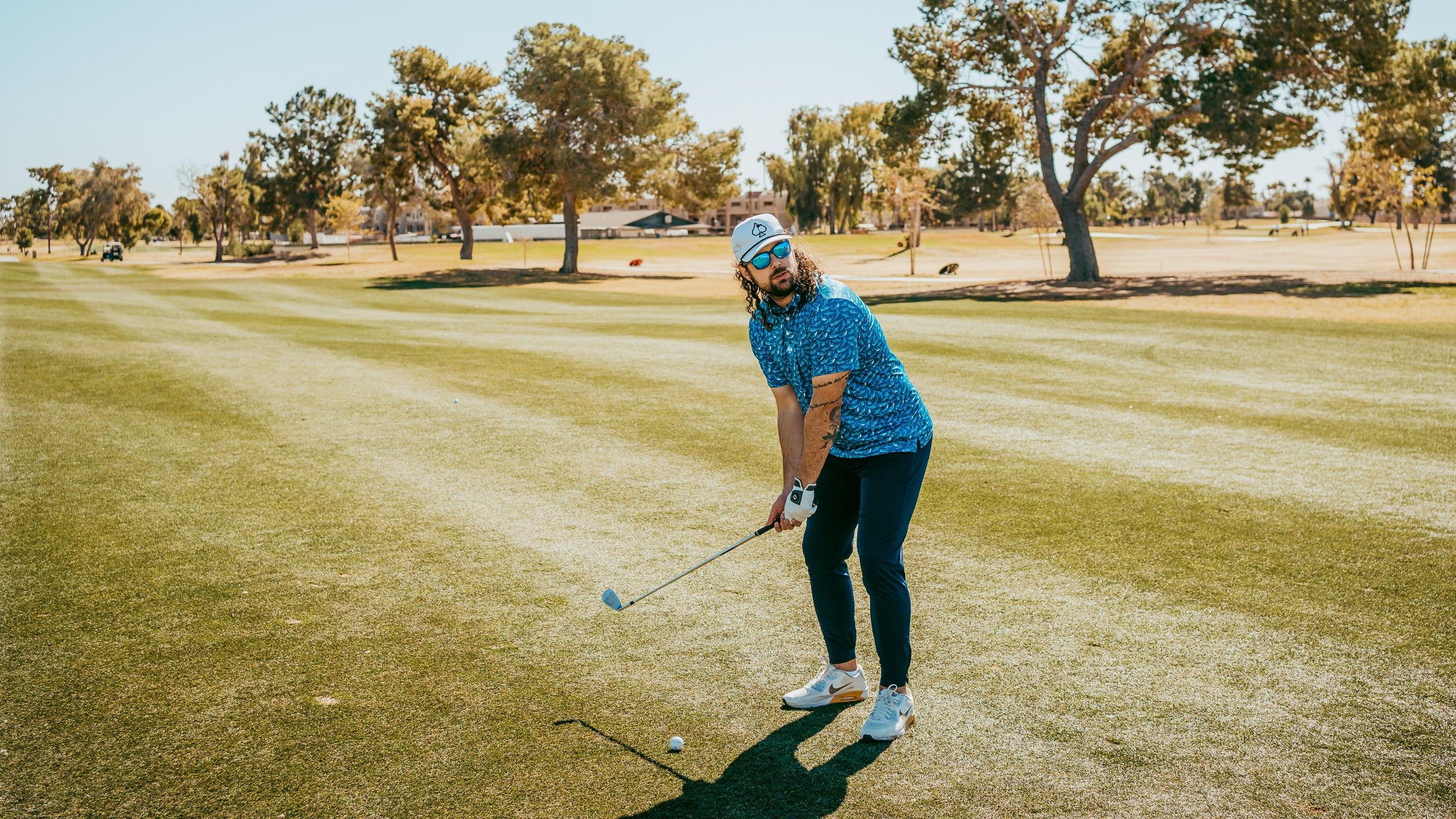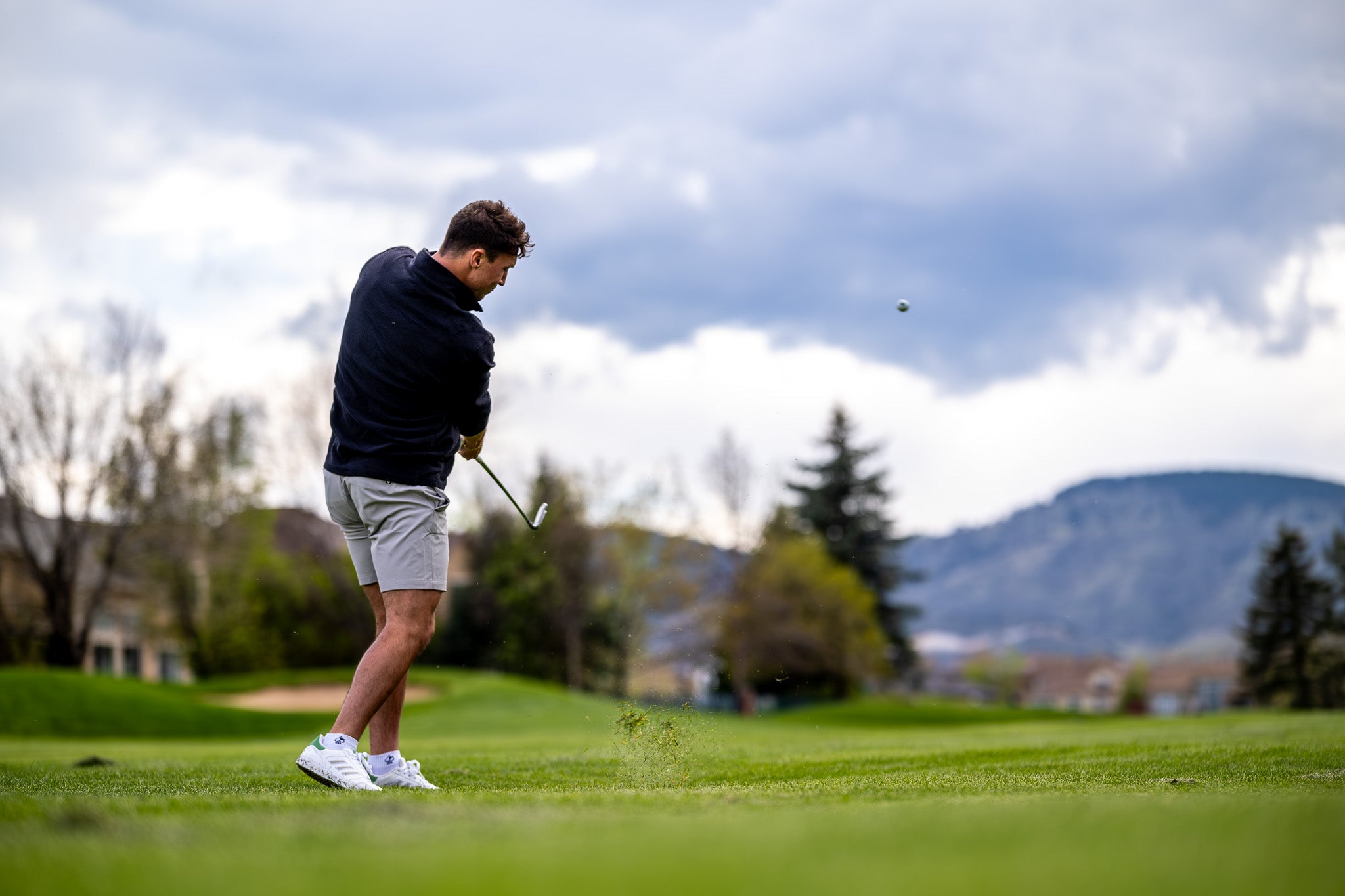When it comes to golf, mastering the basics is crucial. One of the most important fundamentals is knowing how to properly hold a golf club. While it may seem simple, the way you grip the club has a significant impact on your swing, ball control, and overall performance on the course. Whether you're a beginner just getting started or an experienced player looking to refine your technique, understanding how to grip the club correctly can be a game-changer.
In this guide, we’ll walk through the steps to holding a golf club properly, the different grip types, and how to adjust your grip for various shots. And while you're fine-tuning your grip, don’t forget that the right gear can make a world of difference—whether it’s a high-quality polo from Pins & Aces or a headcover to protect your clubs between shots. Now, let’s dive into how to hold a golf club correctly and why it matters.
Why Your Grip is Essential
Before we get into the details of holding a golf club, let's talk about why your grip is so important. The way you hold the club directly affects your control over the ball. If your grip is too tight, you could slice the ball or lose distance. If it's too loose, you might lose accuracy. Essentially, your grip sets the tone for your entire swing.
A solid grip provides stability, control, and the ability to generate power without losing precision. Mastering the grip will not only help you hit straighter, more accurate shots but also allow you to make small adjustments for different types of shots—from driving off the tee to delicate approach shots.
The Basics of Holding a Golf Club
1. Position Your Hands on the Club
Start by positioning your hands on the club properly. For a right-handed golfer, this means placing your left hand at the top of the grip (for left-handed golfers, it’s the opposite). The club should run diagonally across the palm of your left hand, starting near the base of your little finger and running to the pad below your index finger.
Your left thumb should sit just right of center on the club. When you close your hand around the club, the "V" formed by your thumb and forefinger should point toward your right shoulder.
Next, place your right hand on the club so that it rests in the fingers rather than the palm. Your right thumb should sit just left of center on the grip, and the "V" formed by your thumb and forefinger should also point toward your right shoulder. Both hands should work together as one unit during the swing.
2. Choose Your Grip Type
There are three common types of golf grips: the interlocking grip, the overlapping grip, and the ten-finger grip. Each grip type has its pros and cons, and the right one for you depends on your comfort level and playing style.
-
Interlocking Grip: The interlocking grip involves locking the pinkie finger of your right hand with the index finger of your left hand. This grip provides a strong connection between your hands, helping to create a unified motion during your swing. It’s often used by players with smaller hands and is favored by some of the top golfers, including Jack Nicklaus and Tiger Woods.
-
Overlapping Grip (Vardon Grip): The overlapping grip, also known as the Vardon grip, is the most commonly used grip in golf. In this grip, the pinkie finger of your right hand rests on top of the space between your left hand’s index and middle fingers. This grip provides excellent control and power and is typically more comfortable for players with larger hands.
-
Ten-Finger Grip (Baseball Grip): The ten-finger grip, also called the baseball grip, is when all ten fingers touch the club. It’s the easiest grip to learn, making it popular among beginners. While it provides power, it can sometimes reduce the amount of control over the club, which is why more advanced players tend to favor the other grip styles.
3. Maintain a Light but Firm Grip
Once you’ve positioned your hands and chosen your grip type, it’s important to focus on grip pressure. A common mistake among golfers is gripping the club too tightly. This can create tension in your arms and shoulders, leading to a stiffer swing and less control.
Instead, aim for a light but firm grip. Imagine you’re holding a tube of toothpaste—firm enough that you won’t drop it but light enough that you won’t squeeze any toothpaste out. The goal is to stay relaxed while maintaining control of the club throughout your swing.
Adjusting Your Grip for Different Shots
Your standard grip works well for most shots, but sometimes adjustments are necessary depending on the situation. Here’s how to adjust your grip for different types of shots:
1. For Straighter Shots
If you struggle with slicing or hooking the ball, you may need to adjust the position of your hands slightly. For a slice (when the ball curves to the right for right-handed golfers), try rotating your hands slightly to the right on the club. This strengthens your grip and helps square the clubface at impact, reducing the slice.
For a hook (when the ball curves to the left), rotate your hands slightly to the left. This weakens your grip, preventing the clubface from closing too much at impact.
2. For More Power
If you need to hit a long drive off the tee, consider strengthening your grip by rotating both hands slightly to the right (for right-handed golfers). This encourages a stronger release of the clubhead through impact, generating more power and distance.
3. For More Control on Shorter Shots
When hitting delicate approach shots or chips around the course, precision is more important than power. For these types of shots, try weakening your grip by rotating your hands slightly to the left. This helps you maintain better control over the clubface, leading to more accurate shots with less distance.
Common Grip Mistakes to Avoid
Even experienced golfers can fall into bad habits with their grip. Here are a few common mistakes to watch out for:
-
Gripping Too Tightly: As mentioned earlier, gripping the club too tightly is one of the most common mistakes golfers make. A tense grip leads to a stiff, awkward swing and can rob you of both distance and accuracy.
-
Weak Grip: If your hands are too far rotated to the left (for right-handed golfers), it’s called a weak grip. This can cause you to slice the ball or lose power.
-
Strong Grip: On the flip side, a grip that’s too strong (with your hands rotated too far to the right) can lead to a hook, where the ball curves too much to the left.
-
Incorrect Hand Placement: If your hands are too far apart or not working together, it can create inconsistency in your swing. Make sure both hands are positioned correctly on the club and working as one unit.
The Right Grip for a Better Game
Holding a golf club may seem like a simple part of the game, but it’s one of the most important fundamentals to master. Your grip affects your swing, control, and consistency on the course. By understanding the different grip types, maintaining proper pressure, and adjusting your grip based on the shot you need to make, you can improve your overall game.
And while you're perfecting that grip, don’t forget the importance of feeling your best on the course. Whether it’s through the clothes you wear or the accessories you use, having the right gear can give you an edge. Make sure you check out the latest Pins & Aces polos and headcovers to elevate your game in more ways than one.














